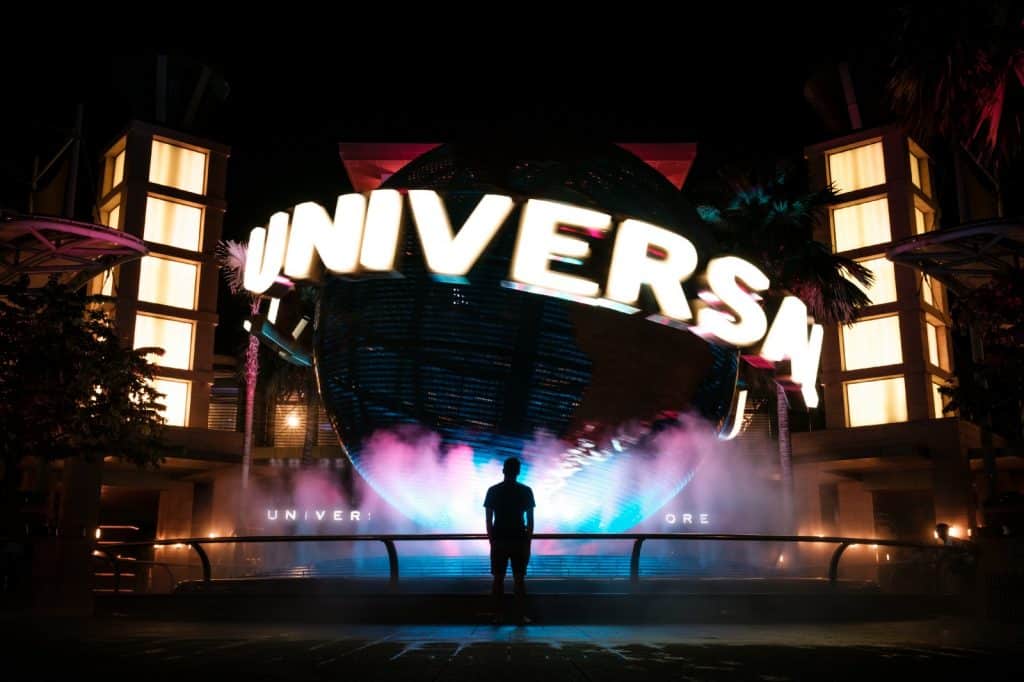I wanted to write and make movies since I was eight-years-old. I read every book I could on writing and filmmaking. This was back in the nineties when the independent filmmaking revolution was taking place. Robert Rodriguez and Kevin Smith had inspired millions of aspiring filmmakers with the $7,000 El Mariachi and the $23,000 Clerks, respectively.
I spent my teens and early 20s trying to think of a way to break into the movie business. I compared myself to others far too often, which I’ve already written is a terrible idea.
When I was 25, I wrote and directed a web series that I thought would launch me into filmmaking. Once it came out, it fizzled, and I was left wondering if filmmaking was right for me. I took a year off from writing and then wrote a script that almost got made. Then another two years went by without me writing a script, and I wondered whether this business was impossible for me.
But then, in 2016, a millionaire real estate investor took an interest in one of my scripts, and I thought we had our big break. We hired line producers and made budgets, schedules, and location scouting in Georgia. Then the day before Thanksgiving, when he was supposed to sign the check, he went up in smoke and ghosted us.
That’s when my producing partners and I decided we’d had enough. Are we going to talk about making movies, or are we going to actually make something?
That’s when we developed the studio mindset, and it helped us produce my directorial debut, 11th Hour Cleaning.
The Studio Mindset
When working for a studio on a blockbuster movie, do you think you have the luxury of taking months or years to complete a script? Absolutely not. You have eight weeks, maybe twelve, if you’re lucky, and they want to give you the WGA minimum. But in most cases, you are under a strict schedule. The picture comes out next summer, so you have to be in production in six weeks. Start typing.
If you fail to turn in your draft, you’ll be branded as a writer who can’t handle a significant assignment. You can’t wait around for your muse to strike. The clock ticks, and if you want a career in this business, you need to act like it.
Set Deadlines and Stick To Them
My partners and I decided that we would write and produce our first film for a low budget, and we set a deadline when we were going to shoot. December 8, 2017. It was August 1st at the time, which gave us a little less than five months to write the script and put together the picture. I had saved up two weeks of vacation and put in a request for work starting on our first day of photography. I had skin in the game, and I wasn’t going to waste this opportunity by not pushing us.
Setting a deadline motivated us to look at each day as we crept closer and closer. If we were going to hit that shooting date, we needed to have a completed script within three months.

Work Backwards From Your Deadline
If you’re experienced enough to be working on your first feature, you should know the steps you need to take to get a film ready to shoot. But just in case, I’ll walk you through it here as we go backward.
If we wanted to start photography on December 8th, we needed to have at least a month of rehearsal and preproduction time. That meant that we needed our cast and heads of departments locked by November 8th. To have that, we needed to cast the film for the four weeks before that, which had a script deadline of October 8th.
To have the script locked by then, and at a modest pace of two pages per day, we needed to start writing the script no later than August 19th. That meant that we needed to have the story outlined within 18 days.
Do you see how you can work your way back into a date? The same can be said if you wanted to work forwards to find the shooting date that would is more comfortable. But let me warn you, comfort never helped anyone finish a script or film. Push yourself, and you’ll surprise yours with what you can accomplish.
But we didn’t even have an idea yet.
Start With What You Have
We all would love to have a few million dollars to spend making the film of our dreams, but let’s be realistic. If you are to produce this yourself, you need to pull it together with your limited resources.
A studio executive can pay to have a stage built with moving walls and a waterfall that disappears into a cavern below. You need to do the same but with a shoestring budget. The means of accomplishing it are different for an independent filmmaker. You have to get scrappy.
Rather than write for a blue sky budget and try to figure out how to make it happen, start with what you already have access to.
Do you have a forest in your cousin’s backyard? Write a movie set in that forest. Do you have a beat-up car and the experience to shoot while camping in the desert? Set the film on the side of the road.
In our case, we had access to my two-story home and wanted to write a horror movie. We decided to create a unique take on the trapped-in-a-haunted-house genre and use my experience as a child working with my parents cleaning foreclosed homes and walking in on a homicide. I know, it’s gruesome, but made for a helluva horror movie.
Write with your experience and include locations you already have access to. You don’t have to worry about finding the perfect location for your budget.
This isn’t a low-budget filmmaker problem either. The filmmakers of Skyline were well-known and experienced visual effects artists. But when they had a $10-million budget to spend on their first film, they chose to set it almost entirely in one location… their highrise apartments in Southern California.

Stick To One Location
The Skyline filmmakers followed this rule, and you should too. A location move is brutal on a film crew from a timing perspective. You have to wrap the previous location before you move on to the next one, and you have to set up that location before you can start filming. Sometimes you can lose days wrapping and prepping.
Big studio films have the luxury of having a second unit strike crew stay behind the wrap a location while the primary crew moves on to the next location, which has already been set up by a swing crew.
Independent filmmakers don’t have that luxury. You can get away from this by only having one primary location. Does that limit the types of stories you can tell? Sure, but you have to work within the confines of what you have to get the film made. You have an output deal to fulfill, remember?
Conclusion
I know that I haven’t touched on how to get the money, how to get your crew to work for cheap, or a myriad of other issues when producing your first film. I’ll cover those in the future. Start thinking like you would if you had a studio executive to answer to. You can’t go back to your executive without solutions to how you will get the film made. Set yourself up for success and an easier time by creating around what you already have access to. Set deadlines and work backward from that shooting deadline to when you must complete your milestones.
Above all, don’t let anything stop you from moving towards starting production on the date you choose. If you let the deadline slip once, you’ll keep letting it slip until years have gone by, and you are no closer to your dreams of being a filmmaker.
EXERCISE: Brainstorm three different locations or unique props that you already have access to. Once you have all three, create a unique idea for one of them, write a short logline, and share it in the comments.
